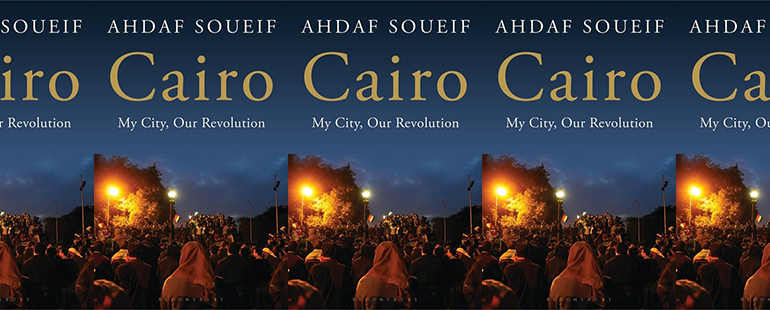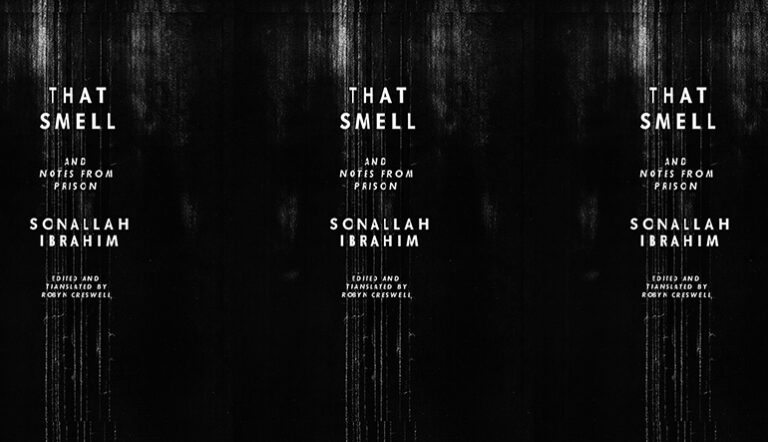Shape and Space in the Revolutionary City, Personified

Ahdaf Soueif’s 2012 memoir Cairo: My City, Our Revolution, published in expanded form as Cairo: Memoir of a City Transformed in 2014 in the United States, presents a stunning illustration of Cairo during the Egyptian revolution in 2011. Soueif’s focus on shape and space brings the memoir out of temporal stasis and into dynamism in its portrait of a city and its people, countering the flat images of Cairo dominating global news media at the time. As she transforms space through her writing and creates a poetic personification of the city, Soueif renders Cairo more than a space on a map. Soueif’s Cairo is a dynamic, evolutionary entity.
This focus on changing space insists on a dignity not afforded in the media, but her work does not stop there. Soueif extends this dignity into something greater: she maps the heart of the revolution and the Egyptian people. By personifying Cairo and its physical spaces, Soueif insists that Cairo is of the people, revealing the city itself as an active participant in Egypt’s Arab Spring. As similar revolutions re-emerge in Egypt, Iraq, Lebanon, and elsewhere throughout the world today, a closer look at Soueif’s memoir reminds us that a city will always belong to its people.
Throughout the first section of Cairo, Soueif describes a multitude of spaces as they transform over time, often comparing their politicized atmosphere during the revolution with the everyday encounters with them she remembers of the past. She reminisces about the Maspero Television Building twice—first, when she remembers her time filming theater in the building. She writes, “I’ve spent many, many hours loitering in this area, warming myself, drinking tea and chatting and hanging about and catching up on essays and assignments. And now it is dark and deserted, and there are four army tanks outside the building.” Here, the space transforms from one of camaraderie in producing art to one encroached upon by the military threat. Later on, she returns to the area and these same four army tanks; she notices that the sign for the Paprika restaurant across the street peeks out from behind one of the soldiers standing on top of his tank. She remembers her “younger self, ablaze with love and poetry and the dormy, dusty khamsin winds,” as she sat across from her lover at the time in the restaurant, “allowing him to hold [her] palm to his mouth, to kiss it under the gaze of all the waiters standing by.” In this instance, Soueif contrasts the surveillance of the soldiers on the tanks with the surveillance of the waiters, highlighting the strength of love in her memory, which surpassed her awareness of the public gaze.
In this same vein, Soueif notes that when a fire broke out next to the Egyptian Museum, the young people, the shabab, rushed to surround and protect this icon of their cultural heritage, unaware of the regime’s snipers on its roof or its future use as torture location by the army. When she comes to a makeshift hospital in the Mosque of Ibad al-Rahman, a projected voice continually asserts this space’s transformation: “‘This is a house of God. A house of God and a hospital.’—the voice declares.” Here, she emphasizes the voice’s affirmation of its dual use. Soueif continues in this way, rendering each physical space she takes care to note in two ways: one, a description of its function in the revolution, and the other, via a quotidian memory.
The most obvious purpose of this duality can be easily found in the words of a young labourer, which come at the end of the first section of the book. He laments, “‘They say we only care about a loaf of bread . . . We care about bread. But we also care about dignity.’” By presenting the contrast between everyday life in Cairo’s spaces and the violence and politicized presence of the revolution, Soueif insists on dignity, on remembering not just violence and corruption, but also love, art, faith, and the simplicity of life.
A look at all the aspects of Soueif’s descriptions of space complicate this purpose. Soueif also focuses somewhat unnaturally on measurement and specific architectural details of space. Of the Mosque of Ibad al-Rahman noted earlier, she writes, “the space is maybe twenty meters long by eight meters wide. . . . there’s a waist-high railing that runs the length of the passage, and the space beyond it—a width of some six meters—is a small mosque.” Most of this specificity is almost too scientific to simply help paint a picture for the majority of her readers—a more effective description of the space would continue to use bodies, such as her description of the “waist-high railing,” or other more easily imagined comparisons than numeric measurement. Another example of this specificity in measurement, however, perhaps brings the reader a bit closer to understanding Soueif’s intention. Her first description of Midan el-Tahrir appears in its own paragraph:
I prefer the Arabic word midan because, like piazza, it does not tie you down to a shape but describes an open urban space in a central position in a city, and the space we call Midan el-Tahrir, the central point of Greater Cairo, is not a square or a circle but more like a massive curved rectangle covering about 45,000 square meters and connecting Downtown and older Cairo to the east, with the river and Giza and the newer districts to the west; its southern boundary is the Mugamma3 building and its northern is the 6 October Overpass—
Many things jump out in this passage. First, Soueif’s refusal to describe the Midan as any specific shape indicates that she does not want to define it in a precise way, as the banality of the shape “square” does not do justice to the true significance of the Midan. But then she quantifies the space with “45,000 square meters,” a descriptor again not immediately useful for a literary memoir, and actually even more limiting and definitive than ascribing a shape to the space. Soueif thus presents the reader with a contradictory stance on how the Midan—and spaces in general—should be described.
Analyzing the punctuation in this passage helps illuminate a resolution to this contradiction: the long, winding, run-on sentence of a paragraph never ends. It would be perfectly acceptable, and perhaps even more grammatically correct, to replace Soueif’s ending em-dash with a period. But there are no periods, no terminal punctuation marks at all, in this paragraph describing the Midan el-Tahrir; its use and significance becomes infinite, constantly changing. Soueif includes the numeric area to show that despite the fact that it can be quantified in square meterage and drawn on a map to scale, its value and role in Egypt is limitless, never ending, truly unquantifiable.
By pairing the insistence on infinite use beyond measurement or mapping with Soueif’s constant reminiscing of the duality of public space, we start to see her refuse a static or containable definition of Cairo and its spaces, like those suggested by news media at the time, which defined Egypt’s spaces as purely political for a global audience. Soueif’s work does not end here, though: one more unmistakable aspect of her descriptions of Cairo becomes apparent while reading Cairo. Soueif, throughout her novel, is constantly personifying the city. She writes, “I am not unique, but Cairo is. . . . the city puts her lips to our ears, she tucks her arm into ours and draws close so we can feel her heartbeat and smell her scent, and we fall in with her and measure our step to hers, and we fill our eyes with her beautiful, wounded face and whisper that her memories are our memories, her fate is our fate.” This evocative personification continues: “Degraded and bruised and robbed and exploited and mocked and slapped about: my city,” “[The Shabab of Egypt] got up and walked into the hearts of their cities. They chanted, ‘We’re your sons / And daughters too,” “And the Midan feeds us, nourishes us,” etc. Only a few examples of her personification, these lines show how Cairo and its spaces take on the roles of mother, nourisher, lover, comrade, victim of the government, and so on. Cairo’s memories are the people’s memories, her fate is the people’s fate. Cairo is thus of the people.
In Cairo, Soueif’s insistence on her city as an ever-changing being possible of love, betrayal, and kindness refuses any official definition of a city as simply a measured geographic area, a two-dimensional space for corruption or political gain. Soueif’s Cairo cannot be controlled by the regime: she, the city, is one of the people, of all the people, and therefore a crucial participant in the revolution. We are currently witnessing a proliferation of revolutions, where people not just in the Middle East, but in countries across the globe, are standing up against government corruption and demanding change. In this historic moment of upheaval, Soueif’s memoir of Egypt’s 2011 revolution inspires and reminds us that cities will always belong to their people; as long as Cairo exists, its people will push forward.
This piece was originally published on November 25, 2019.


